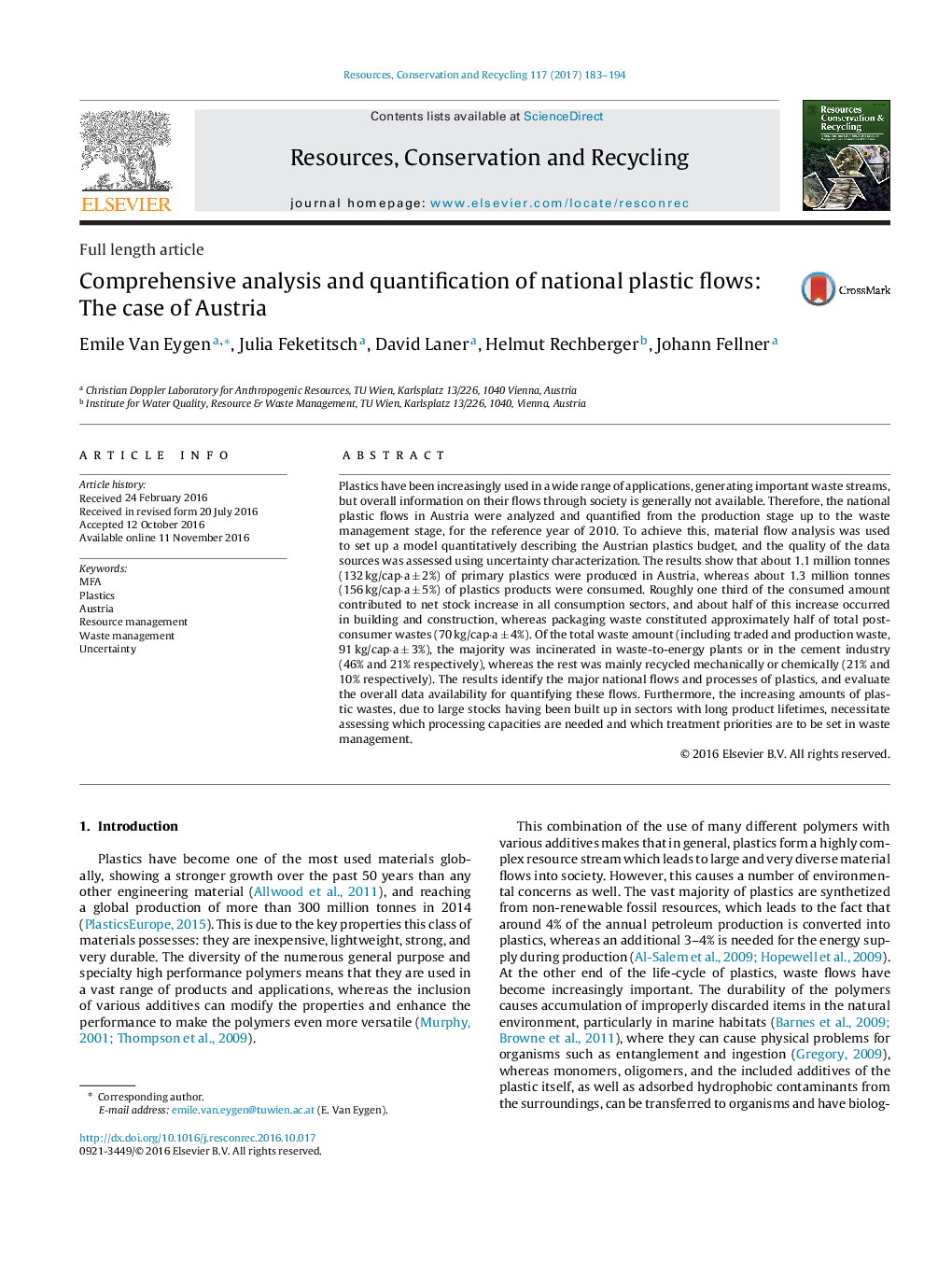| کد مقاله | کد نشریه | سال انتشار | مقاله انگلیسی | نسخه تمام متن |
|---|---|---|---|---|
| 5118899 | 1378185 | 2017 | 12 صفحه PDF | دانلود رایگان |
- The Austrian plastics budget was analyzed and quantified in detail for 2010.
- The data quality was evaluated using comprehensive uncertainty characterization.
- Consumption stocks showed a net increase by one third of the total consumed amount.
- 67% of waste plastics were incinerated in waste-to-energy plants and cement industry.
- 31% of waste plastics were recycled mechanically and chemically.
Plastics have been increasingly used in a wide range of applications, generating important waste streams, but overall information on their flows through society is generally not available. Therefore, the national plastic flows in Austria were analyzed and quantified from the production stage up to the waste management stage, for the reference year of 2010. To achieve this, material flow analysis was used to set up a model quantitatively describing the Austrian plastics budget, and the quality of the data sources was assessed using uncertainty characterization. The results show that about 1.1 million tonnes (132 kg/cap·a ± 2%) of primary plastics were produced in Austria, whereas about 1.3 million tonnes (156 kg/cap·a ± 5%) of plastics products were consumed. Roughly one third of the consumed amount contributed to net stock increase in all consumption sectors, and about half of this increase occurred in building and construction, whereas packaging waste constituted approximately half of total post-consumer wastes (70 kg/cap·a ± 4%). Of the total waste amount (including traded and production waste, 91 kg/cap·a ± 3%), the majority was incinerated in waste-to-energy plants or in the cement industry (46% and 21% respectively), whereas the rest was mainly recycled mechanically or chemically (21% and 10% respectively). The results identify the major national flows and processes of plastics, and evaluate the overall data availability for quantifying these flows. Furthermore, the increasing amounts of plastic wastes, due to large stocks having been built up in sectors with long product lifetimes, necessitate assessing which processing capacities are needed and which treatment priorities are to be set in waste management.
152
Journal: Resources, Conservation and Recycling - Volume 117, Part B, February 2017, Pages 183-194
